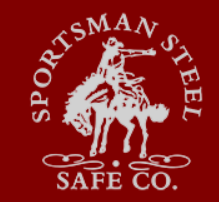Protecting firearms is paramount for responsible gun ownership. A quality gun safe isn’t just a storage solution; it’s a crucial component of a comprehensive security plan. This article delves into the world of gun safes, exploring various types, features, and factors to consider when making a purchase. We’ll examine the essential elements that contribute to a safe’s effectiveness, from construction materials to security mechanisms. Ultimately, our goal is to equip you with the knowledge to choose the best gun safe for your specific needs and circumstances.
**Understanding the Different Types of Gun Safes**
Gun safes come in a variety of forms, each with its own strengths and weaknesses. Understanding these distinctions is key to making an informed decision.
* **Fire-Resistant Safes:** These safes are designed to withstand high temperatures for a specified period, typically protecting contents from fire damage. While not impenetrable to all threats, they offer a layer of protection against accidental or intentional fires. The fire resistance rating is crucial, and higher ratings generally correspond to longer protection times. These are often a good choice for those with concerns about fire hazards in their home environment.
* **Steel Safes:** Built from robust steel, these safes are often the most common and affordable option. The thickness of the steel and the quality of the welding play a significant role in their security. Steel safes, particularly those with reinforced locking mechanisms, provide a strong deterrent against forced entry. They are a good middle ground between cost and security.
* **Combination Safes:** These safes use a combination lock for access. While relatively straightforward to operate, they are susceptible to being broken into or cracked if the combination is compromised. Combination safes are often budget-friendly but may not offer the same level of security as key-operated or electronic models.
* **Key-Operated Safes:** These safes use a key to unlock the door, providing a more secure and reliable method of access compared to combination locks. The quality of the lock mechanism and the key itself are crucial factors in determining the safe’s overall security. Key-operated safes are generally considered a good middle ground between combination and electronic options.
* **Electronic Safes:** These safes utilize electronic locking systems, often with keypad or biometric access. These offer a high degree of security and can be programmed with multiple user codes. However, electronic safes can be susceptible to electronic interference or malfunctions, requiring careful consideration of the potential vulnerabilities.
**Key Features to Consider When Choosing a Gun Safe**
Beyond the basic type, several crucial features impact the safe’s effectiveness:
* **Steel Thickness:** A thicker steel plate is generally more resistant to forced entry. Manufacturers often specify the gauge of steel used in the construction.
* **Locking Mechanisms:** The quality and type of locking mechanism directly impact the safe’s security. Modern safes are often equipped with multiple locking points and reinforced bolts, making them more difficult to open.
* **Fire Resistance Rating:** If fire protection is a concern, a fire-resistant safe with a recognized rating (e.g., UL or ETL) is essential.
* **Interior Space:** Consider the number and size of firearms you need to store, as well as any other items you may want to include. Adequate interior space is crucial to prevent damage or inconvenience.
* **Security Features:** Some safes offer additional features like tamper alarms or reinforced hinges and latches. These features can enhance the overall security of the safe.
* **Installation:** Consider whether the safe needs to be anchored to the floor or wall for added security. Proper installation is crucial to prevent the safe from being moved or damaged.
**Security Considerations and Real-World Examples**
Security is paramount. A safe’s effectiveness is directly related to its construction and installation. A high-quality safe with a robust locking mechanism, combined with proper anchoring, significantly reduces the risk of theft. Case studies of safes being breached often highlight vulnerabilities in installation or the use of less-secure locking mechanisms. For instance, a safe that is not adequately anchored to the floor can be easily lifted and carried away.
**Budgeting and Choosing the Right Safe**
The cost of gun safes varies significantly depending on size, features, and construction. Lower-priced models may sacrifice some security features, while higher-end options often provide more robust protection and advanced technologies. It’s crucial to weigh the cost against the potential risks and your specific security needs.
**Conclusion**
Choosing the best gun safe is a significant decision that requires careful consideration of your needs, budget, and the level of security you require. By understanding the different types of safes, key features, and security considerations, you can make an informed decision that ensures the protection of your firearms and valuables. Remember, a well-chosen and properly installed gun safe is an investment in the security of your home and the safety of your firearms.
